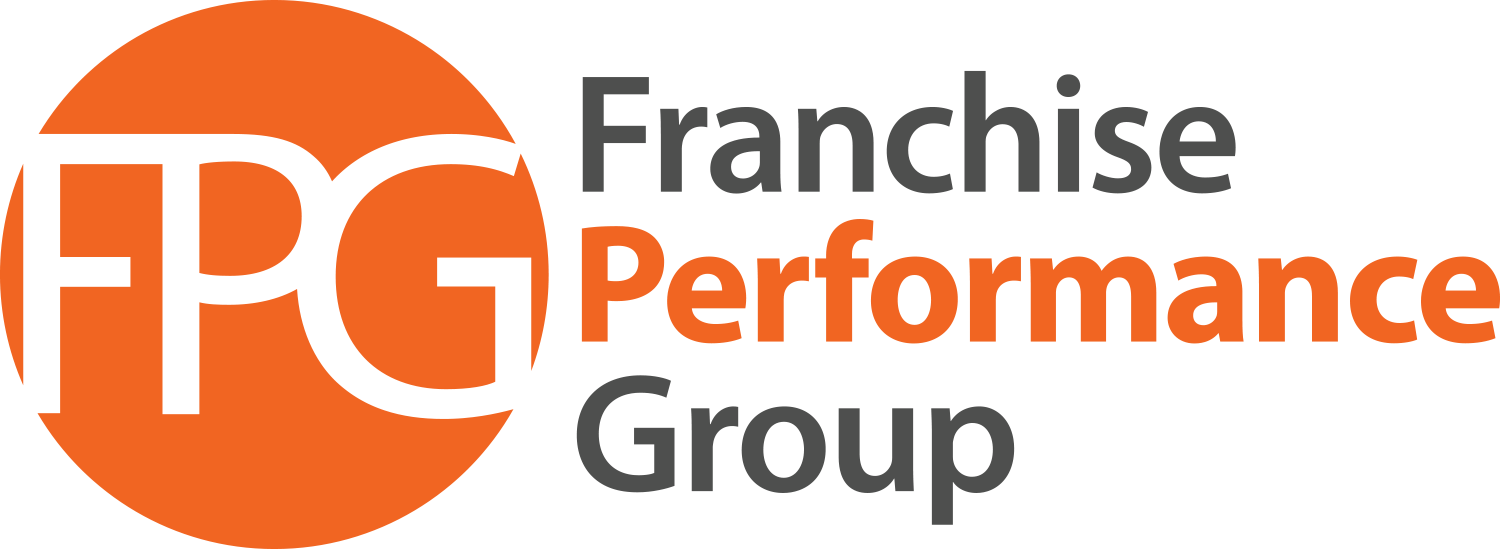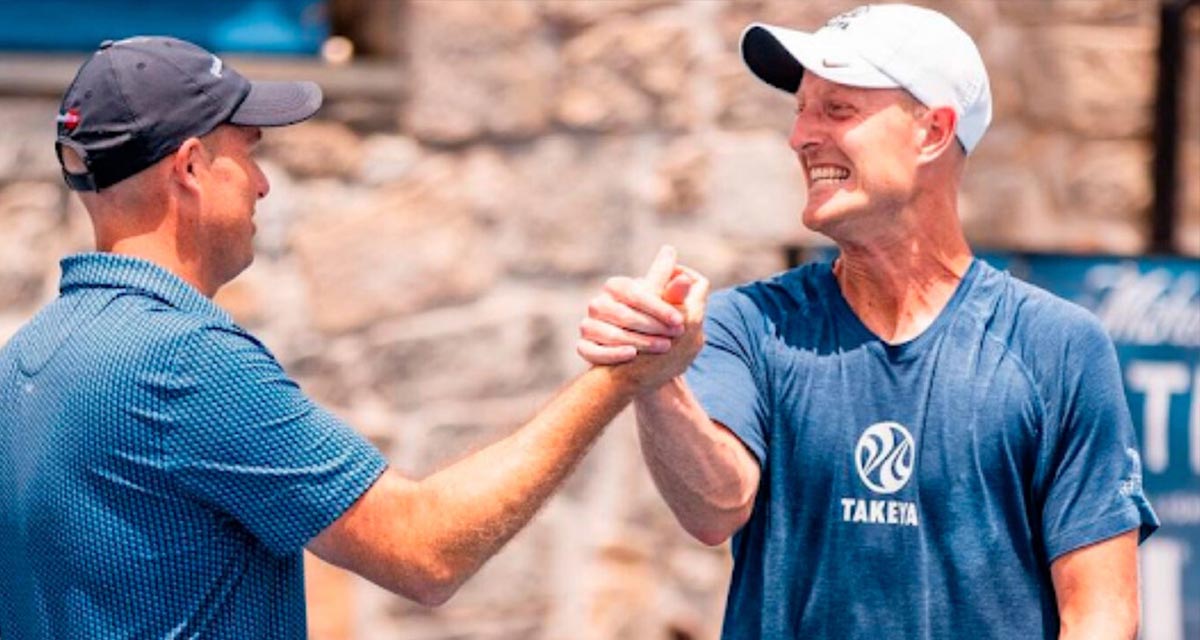
Once upon a time there was a franchise consultant named Joe. Joe loved tennis. It was his primary escape from the worries of life and work. He even bought a tennis ball machine to work on his consistency, ball placement, spin, and shot mechanics.
Then Joe got old.
Joe remembered how in his 30’s he was like a golden retriever, running all his competitor’s shots down and returning balls like he was a backboard. In his 40’s, Joe lost a step. He started hitting defensive shots on balls he could previously track down and attack. In his 50’s he lost some stamina and another step. He started selectively letting balls go by him while saying to himself, “Better conserve energy and lose some points, but win the war.” By his late 50’s he stopped lying to himself and owned the fact he was never going to be a skilled tennis player again. He gave his racquets to charity and his tennis ball machine to a neighbor whose kids were just learning tennis. He drowned his sorrows by subscribing to Netflix and eating fudgesicles.
2 years ago, Joe’s homeowners association converted 2 tennis courts in his neighborhood into 4 lighted pickleball courts. Joe watched neighbors play pickleball. He thought the game looked easy. Many players looked more like the third runner up of the Wilford Brimley lookalike contest at the county fair in Ottumwa, Iowa than they did athletes. Joe researched the game closer. He learned the game started near Seattle and was named after the founder’s mangy dog. Joe was a tennis purist and swore to himself and God he would never play a sport named after a dog, even though “dog” spelled backwards is “God.”
But Joe eventually committed blasphemy and gave pickleball a shot. He quickly developed a passion for the game. Nearing 60 years of age, he found with pickleball’s smaller court, hand speed and shot selection, not foot speed and power, were the keys to success. Because of the hard paddle and hard plastic ball, no matter how hard anyone swings, the ball can only go so fast. He found he could hold his own and beat more athletic players half his age, occasionally drilling them in the chest with the ball, while raising his free hand to say, “Sorry,” but secretly bubbling with sadistic pleasure.
Joe officially joined the ranks of 36 million Americans who now play pickleball in the United States.
Joe is also a franchising consultant and entrepreneur. He was recently asked to write an article about how franchising and pickleball may intersect to the benefit of both entrepreneurs, the players, and the game.
I am the Joe I was previously referring to. I am struggling with a smooth and clever transition from the third-person perspective I used opening this article to the first-person perspective I will now use to analyze pickleball opportunities. I’ve got to get on with my day, so I am just plowing forward..
The Demand Side: Pickleball Demographics and Psychographics
There are currently 36 million Americans who have played pickleball at least once over the last 12 months. To put that into perspective, that’s about the current population of California assuming people stop moving out.
These 36 million players can be lumped together into three separate buckets according to skill level and arrogance: The Beginner, The Banger, and The Snob. It takes a beginner about 6 months of playing to get into the intermediate Banger category and turn their nose up at Beginners. It takes about 1-2 years to elevate to the Snob level, largely because as the Banger elevates, much of what they did to dominate other Bangers (like lobs and speed up shots) can be a hot lunch at the Snob level. Bangers often have to rethink and retool their game to become Snobs.
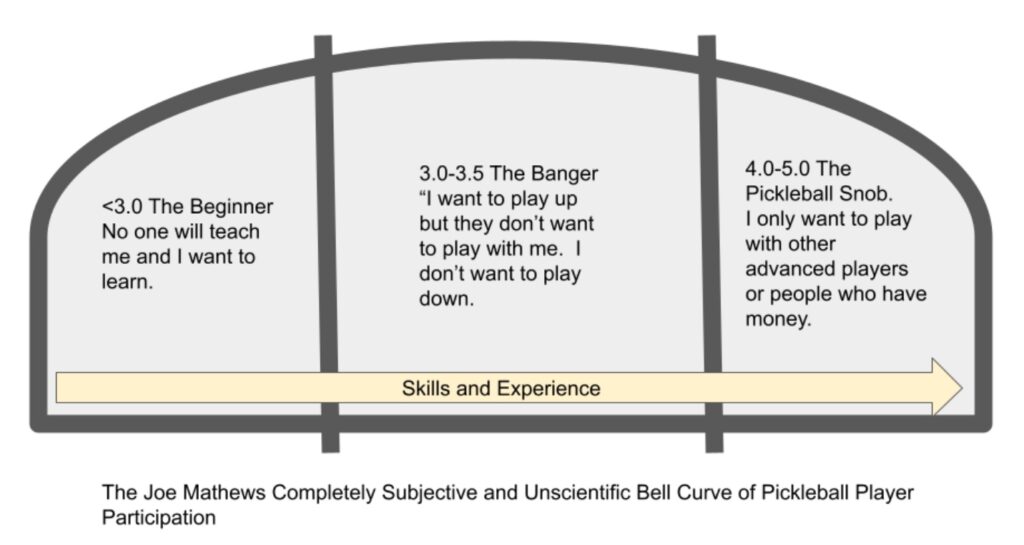
The Supply Side:
Pickleball players need a place to play, complain, and snub other weaker players. According to the Association of Pickleball Professionals, there are currently over 10,000 pickleball courts in the United States and growing.
There are a few chains making a hard run at pickleball, trying to occupy the position “the best place to play.” The first is Lifetime fitness with about 150 locations around the country. The next is Chicken N Pickle, a new 13-unit and growing “eatertainment” venue largely based in the midwest.
Franchising has a few early entrants into pickleball venues: Pickleball Kingdom (who opened a single location in 2022) and Ace Pickleball Club who are opening their first unit in 2023. As a 35-year veteran of franchising, selling franchises before a chain has established any proof of concept is often a bad idea. Smart-money franchisees won’t invest in a concept that seeks to create proof of concept at the franchisees’ expense. And why should franchisees pay for the privilege of refining the franchisor’s model by making costly rookie mistakes and fixing them for the next franchisee and increasing the value of the franchisor’s intellectual property with no remuneration? Shouldn’t the franchisor pay franchisees to improve their model and fix their mistakes? In these situations, the franchisee adds more value to the franchisor than the franchisor adds to the franchisee, which is why a simultaneous concept and franchisor launch seldom works and there are few takers.
These franchisors probably feel that pickleball is hot and they can make fast money by implementing a classic, pioneering “speed-to-market” strategy. While franchising is a legitimate strategy to generate rapid growth, franchising seems to work best in established markets that have become fragmented or commoditized. Franchisors often succeed by firing flaming arrows into the backs of market pioneers or professionalizing fragmented industries by studying their models, learning from their mistakes and vulnerabilities, and going to market with some version of a faster-cheaper-better operating model. See McDonalds with hamburgers, Subway with sandwiches, KFC with fried chicken, Jani-King with commercial cleaning, and Great Clips with barbershops. Franchisors seldom invent their category. They almost always create high value, defensible, profitable, and sustainable brands by entering industries later but with a smarter model and professionalism.
I see pickleball venues largely as a commodity service. A pickleball court is just a court. As a starting point, well constructed courts are the same. If brands can’t find a way to add additional value to the pickleball experience, then eventually the brand will compete solely on price and convenience. Municipal courts are often free which is a starting point for a value comparison. Chicken N Pickle attempts to add additional value by marrying food service and the convenience, comfort, and year round play indoor courts and out of the nasty, cold, windy midwestern markets they compete in.
As a food service veteran, the food industry is brutal right now. Food service may prove to be a limiting factor, impeding Chicken N Pickle’s growth options, and allowing nimbler, limited services concepts to grow faster, stealing their leadership position as the preferred venue provider. Additionally, Chicken N Pickle is not a concept that is difficult to copy and stands to get ripped off by copycats who will use Chicken N Pickle as proof of concept and open their own “eatertainment” pickleball venues where Chicken N Pickle have yet to open. How many pickleball entertainment eateries does a market need or want? This may create significant barriers to entry for Chicken N Pickle later. Therefore, Chicken N Pickle and trailing copycats will most likely be relegated to local or regional markets, rather than growing to a national powerhouse.
At the same time, existing tennis establishments and municipalities can easily convert tennis courts to pickleball courts because of both increased demand and better unit-level economics. A facility can generate revenue from two pickleball courts for every one tennis court. Plus most pickleball players play doubles. Therefore a facility can have 8 paying pickleball customers utilizing the same square feet as only two paying tennis players. Their cost of converting a tennis court to a pickleball court is nominal and therefore lower risk than a full blown pickleball start up, adding additional risk to a start up investment.
The Future of Franchising and Pickleball
Over time, pickleball will most likely fragment like fitness. There will be tribal concepts for highly skilled pickleball diehards such as CrossFit, catering to the 4.0+ pickleball snobs. There will be limited service price leaders like Planet Fitness who cater to Beginners and Bangers who are free to spray balls all over each other’s courts in a judgment free zone.
My personal desire is to see a franchised pickleball trainer/coach model emerge akin to a fitness personal trainer.
Watch Selkirk
One of the questions I’ve learned to ask entrepreneurs is, “What business are you in?” Market leaders will generally answer the question differently than the obvious. Selkirk, Paddletek, and Joola all manufacture great pickleball paddles. However, unlike the rest, Selkirk is led by visionaries who have built a pickleball ecosystem ensuring they maintain their leadership position into the foreseeable future. Franchising, in particular private equity firms looking to platform franchisors, can learn and replicate what Selkirk has accomplished so far. Private equity firms in franchising seemingly all use cash, networking, and cold calling to create deal flow. Few create self-perpetuating ecosystems like Selkirk to surface proprietary deal flow.
Selkirks 4+ Prong Pickleball Domination Strategy
- They have some of the best-selling and highest-rated paddles on the market.
- They aggressively signed the best players to play with their paddles. I recently was at a professional tournament where 3 out of 4 of the gold medalists were playing with a Selkirk paddle.
- Selkirk TV. They have content streams, podcasts and online lessons to promote, grow, and evolve pickleball while creating more Selkirk brand equity.
- Selkirk Labs. They enroll thousands of pickleball enthusiasts and early adopters who pay hundreds of dollars to get their hands on new paddle prototypes and provide the Selkirk customer feedback. By doing so, they create a nationwide volunteer army of local pickleball social influencers and brand ambassadors who pay Selkirk for the privilege of promoting Selkirk. It’s brilliant. This strategy also lends itself to franchising.
The Next Big Brand: Pickleball training, coaching, and education
With the money pouring into professional pickleball, (appearance fees, purse sizes) top pros are quitting their other full time jobs and they are starting to get away from teaching and coaching in order to train more and capture more prize money and sponsorship dollars. In the two years I have been playing, I’ve taken clinics from Jay Davellier (top ten in doubles and singles) and Riley Newman (second most successful men’s doubles player).
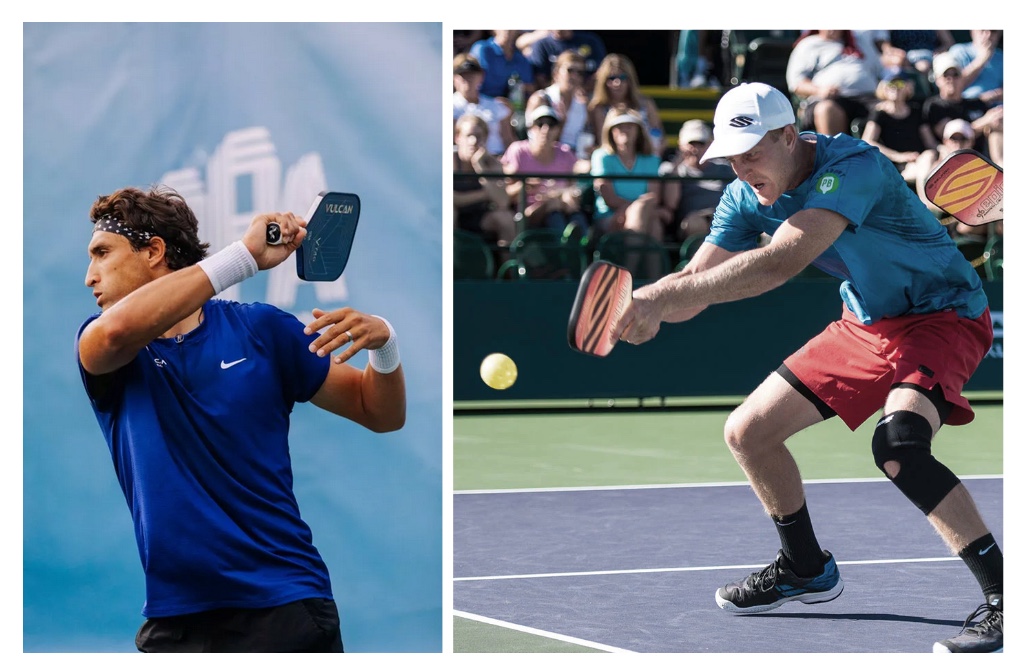
It’s like learning tennis by taking lessons from Roger Federer and Raphael Nadal. I also took a lesson from a coach named Jimmy in Naples, FL who I found out later lived in his car and washed his socks in the public restroom. The pickleball training and coaching industry is the typical wildly inconsistent cottage industry ripe for professionalism and disruption.
The game is rapidly evolving and so are the techniques and strategies. Pickleball has no Nick Bollettieri, a tennis training pioneer who created a premier academy and methodology launching the storybook careers of tennis prodigies Andre Agassi, Jim Courier, Monica Seles, Maria Sharapova, and the Williams sisters. Professionalizing pickleball training and coaching by licensing a brand and player training methodology to the cottage industry of coaches is perfect for franchising. And what if Selkirk licensed its name to this company whose every coach donned Selkirk shirts, shorts, and paddles creating an army of advanced Selkirk students who kick butt in local tournaments and also don Selkirk shirts, hats, and paddles. Selkirk would continue its evolution from “paddle manufacturer” to “aspirational pickleball lifestyle brand” and pickleball trainers and coaches can elevate and differentiate themselves from the rest of the cottage industry.
Selkirk, are you listening?
Call me. Let’s do this!
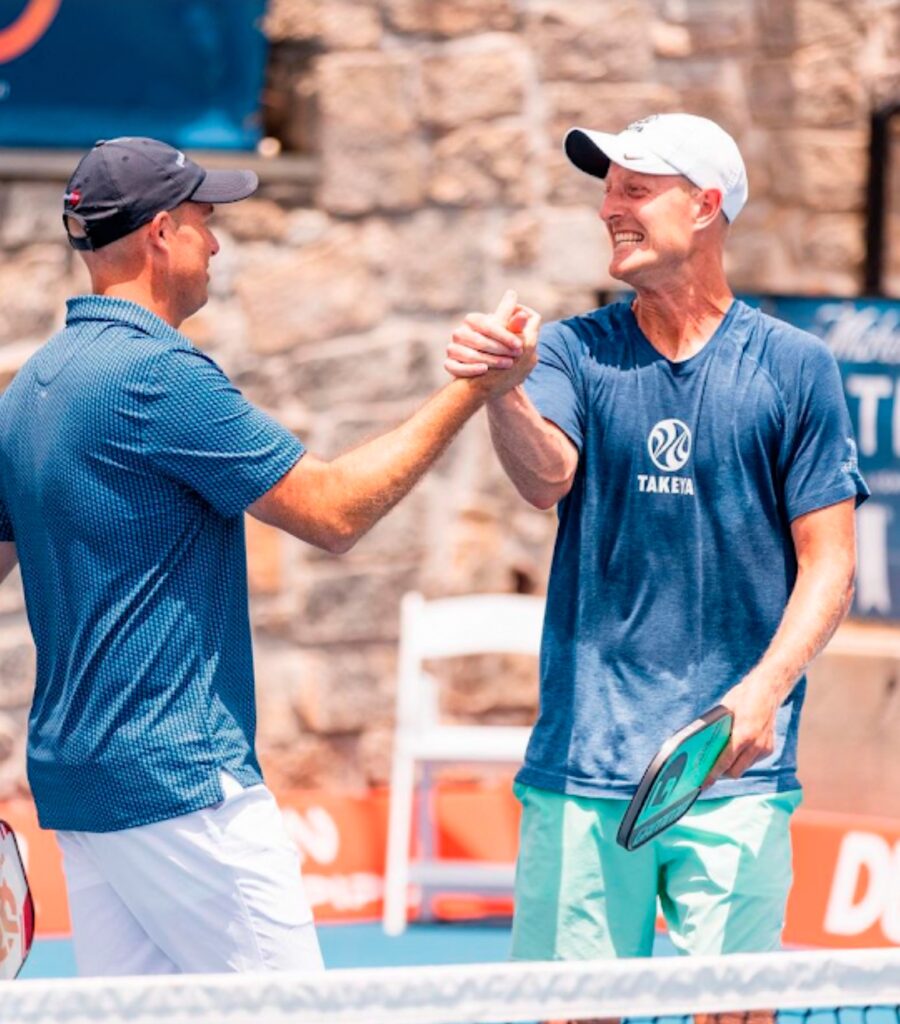
Photo by Joe Mathews
